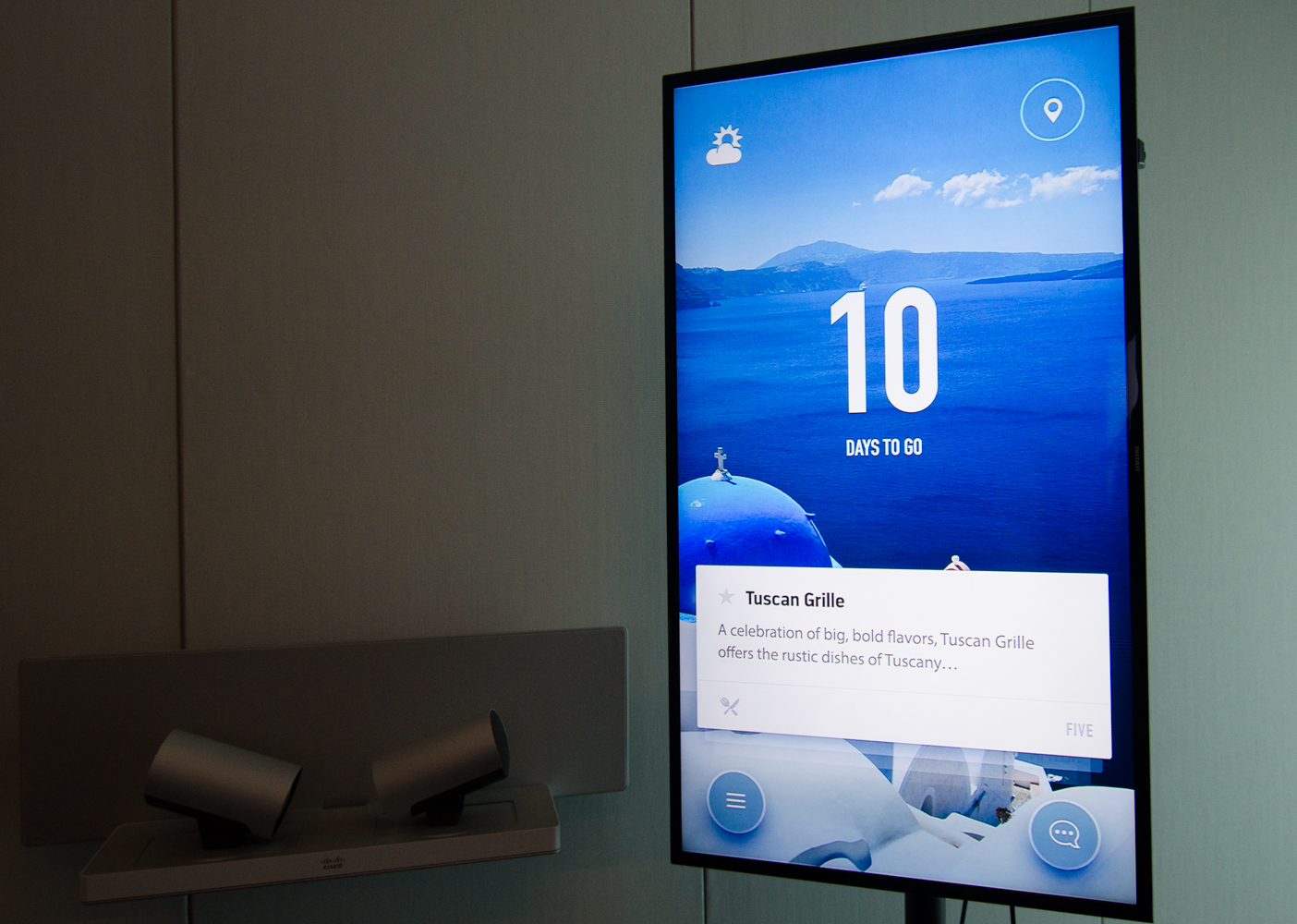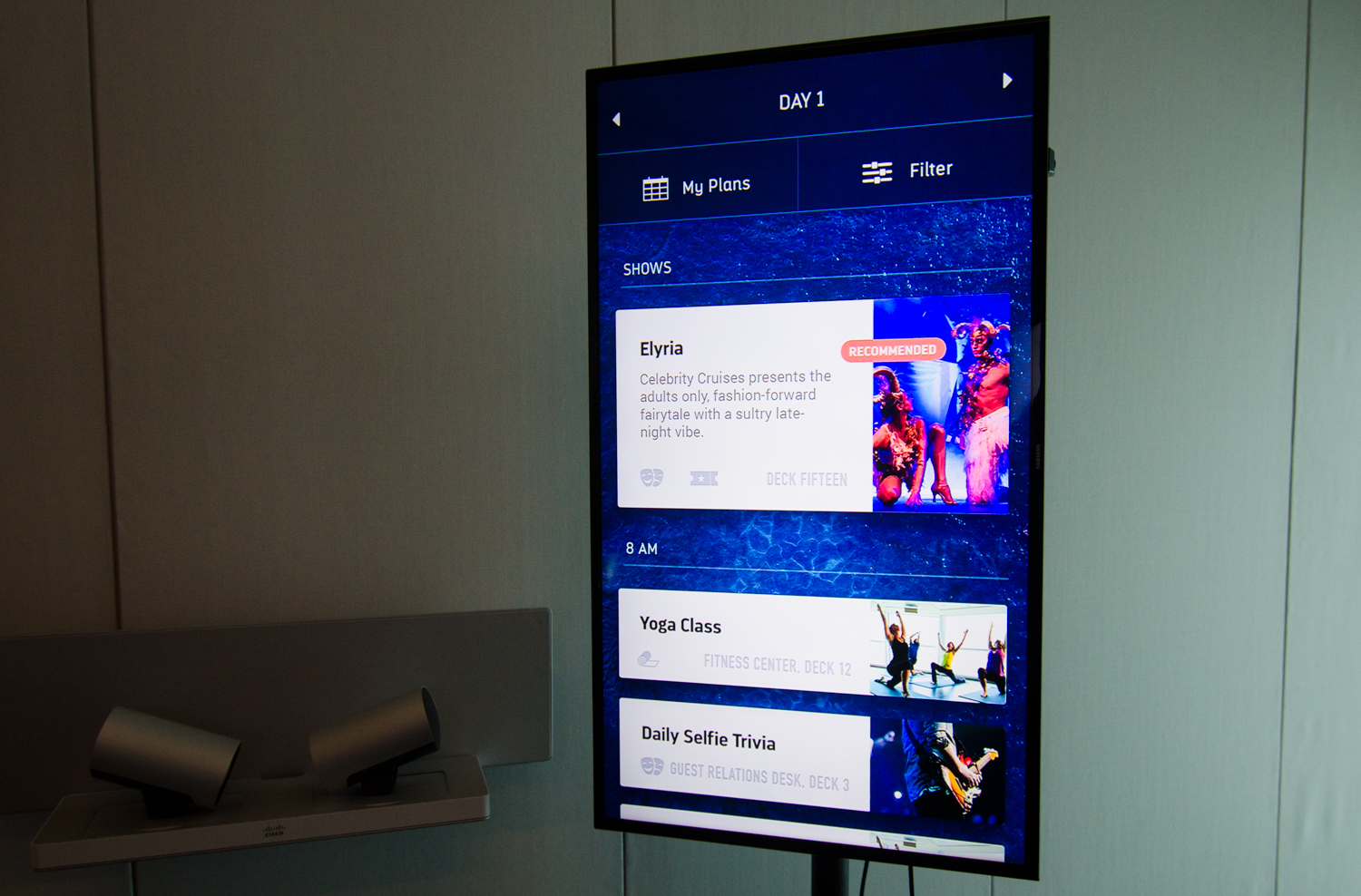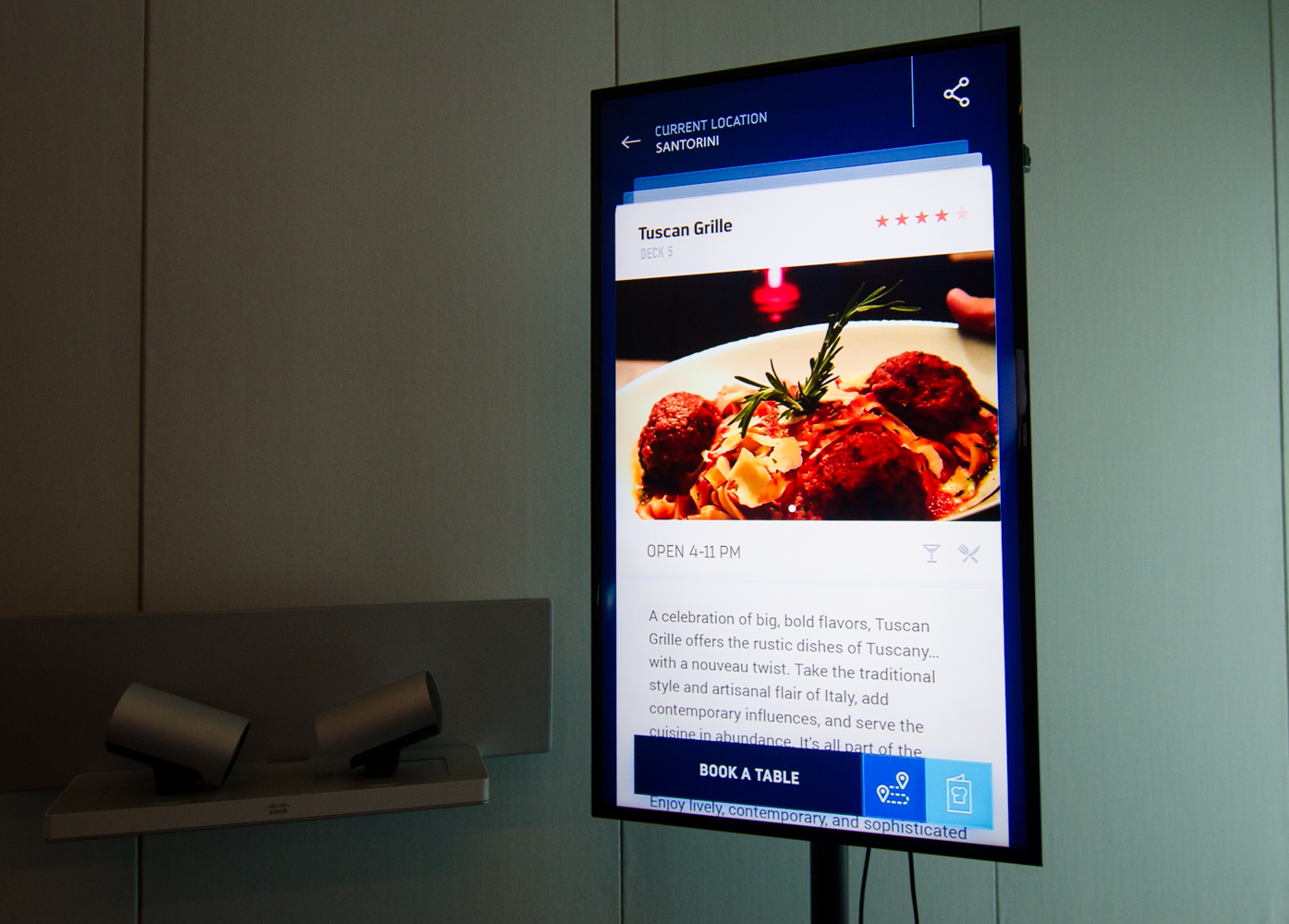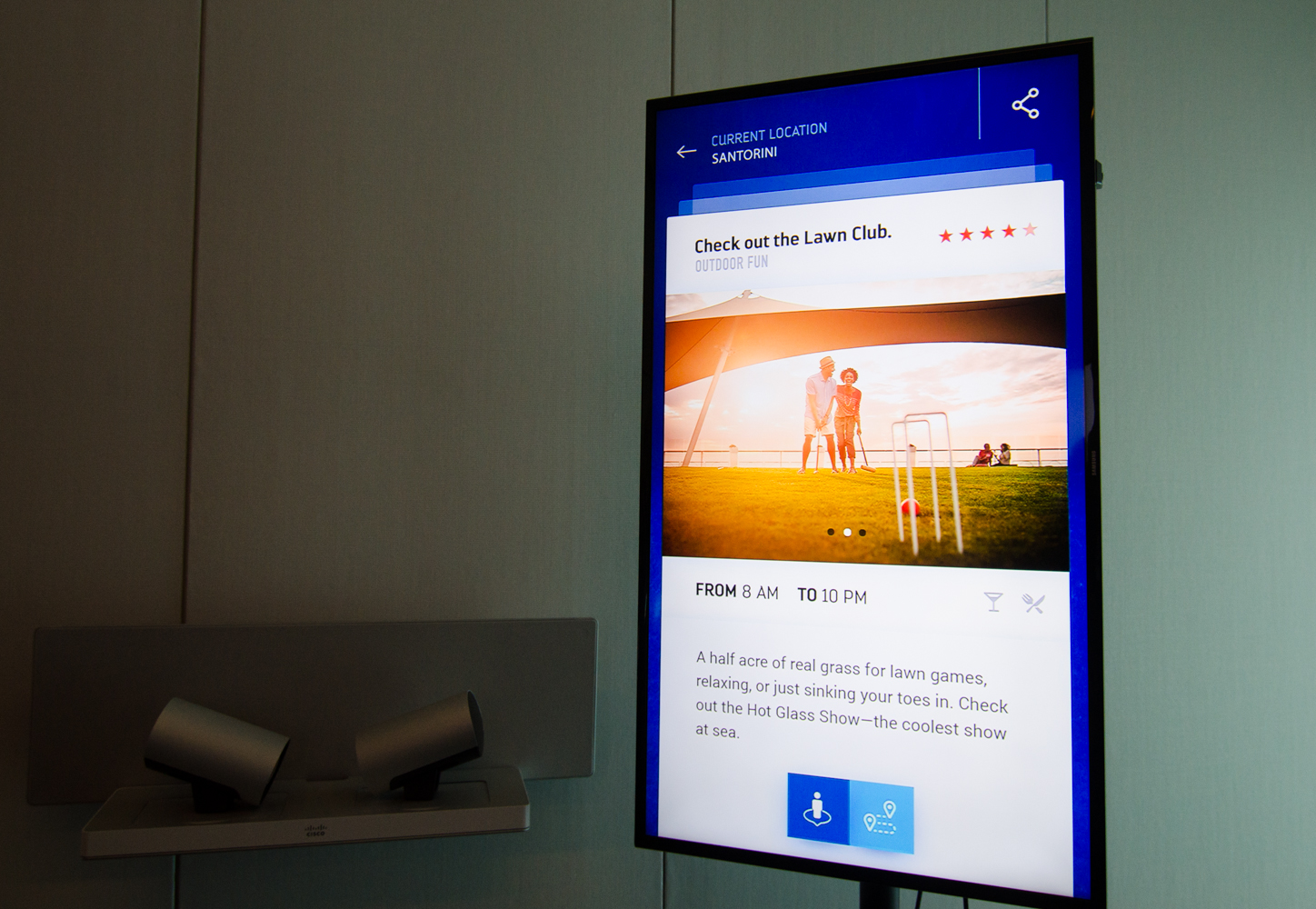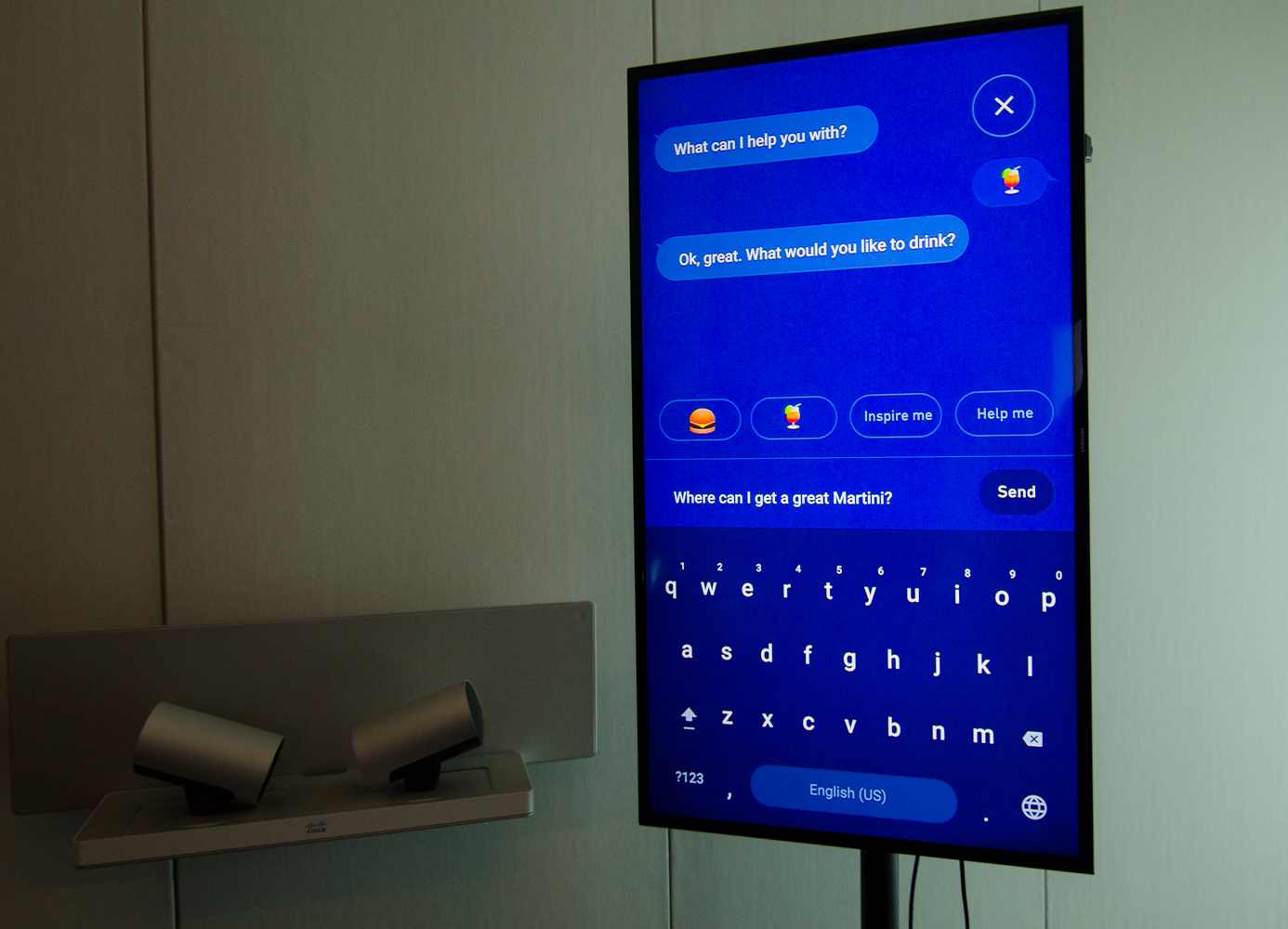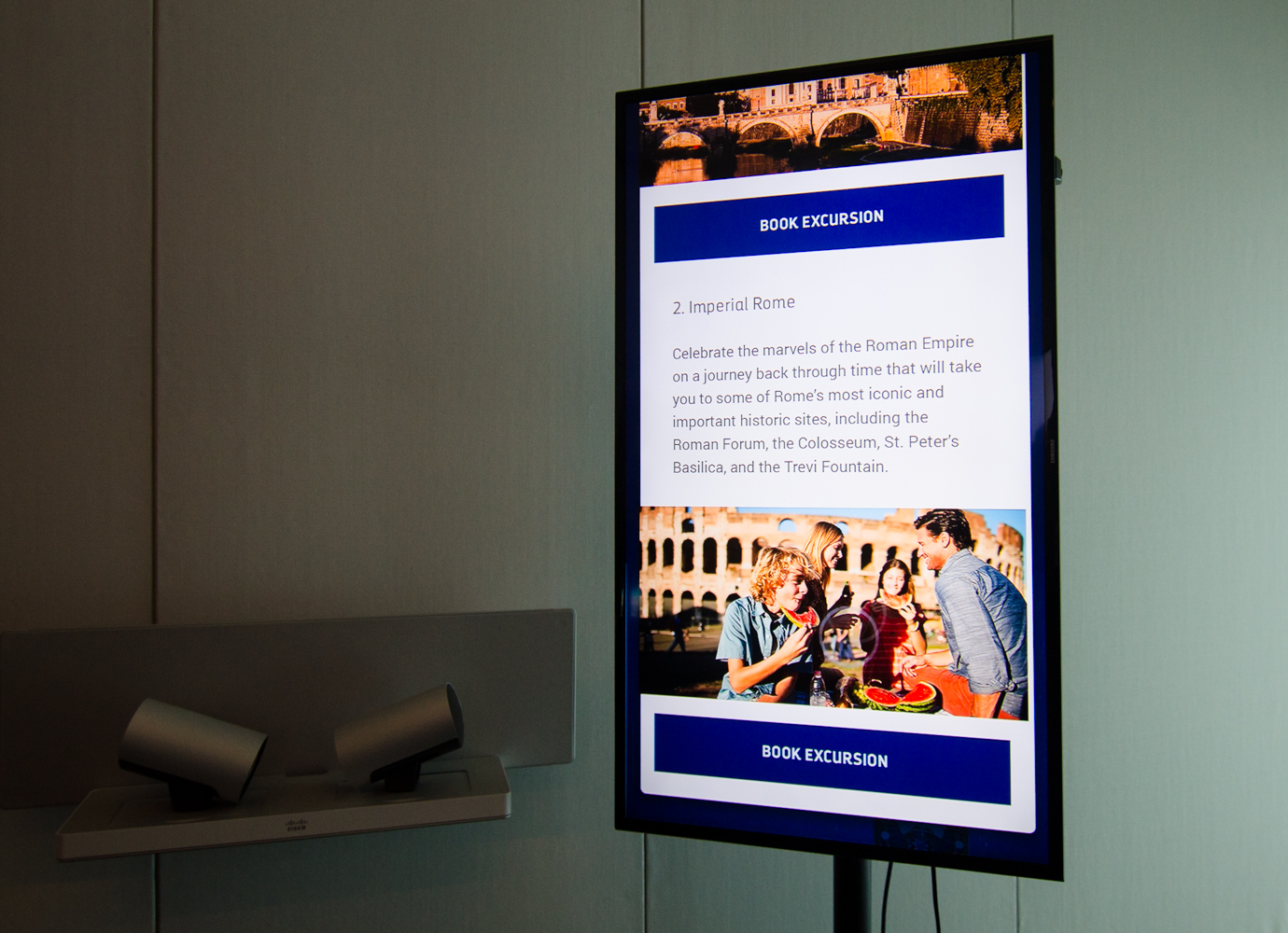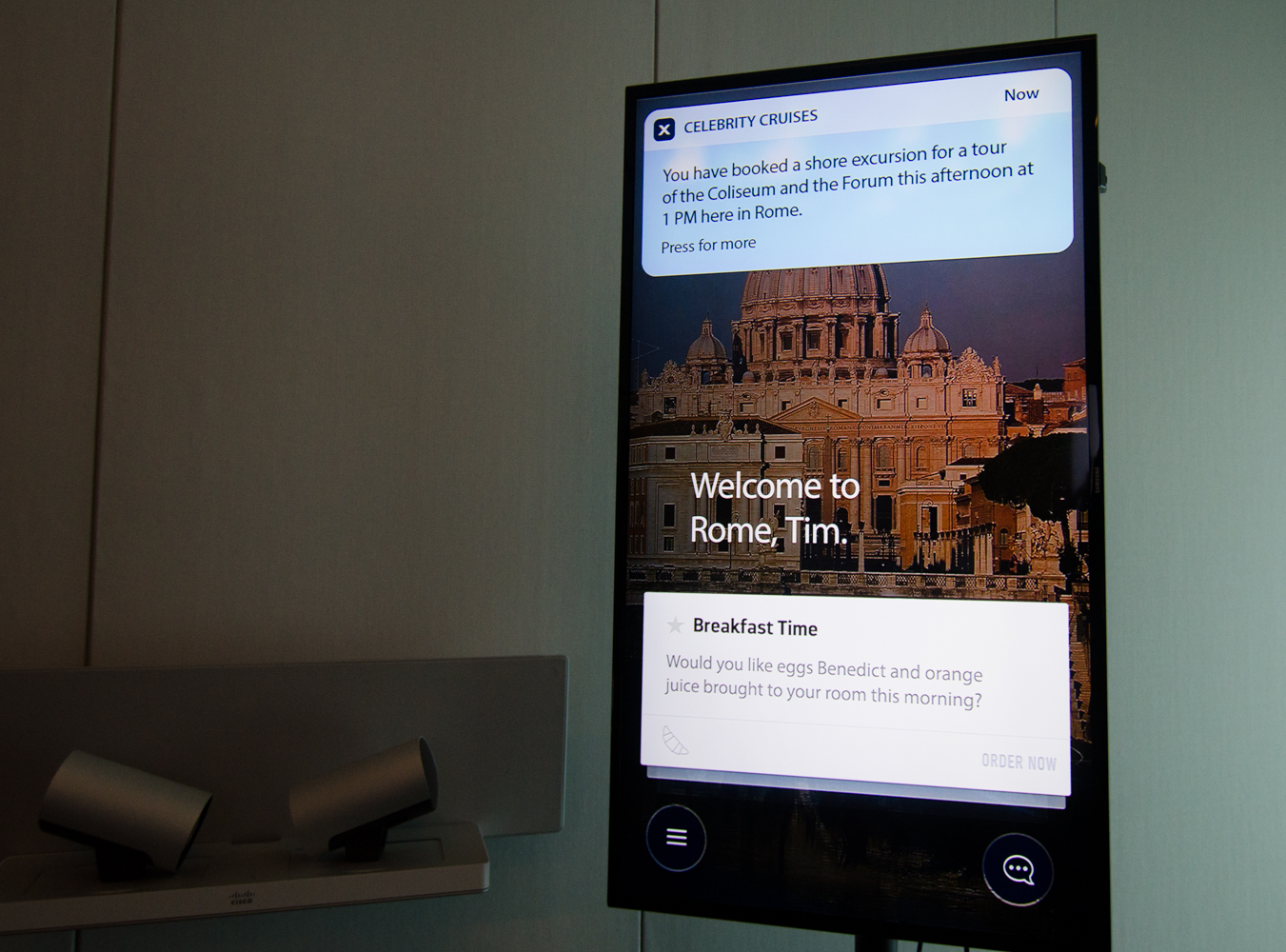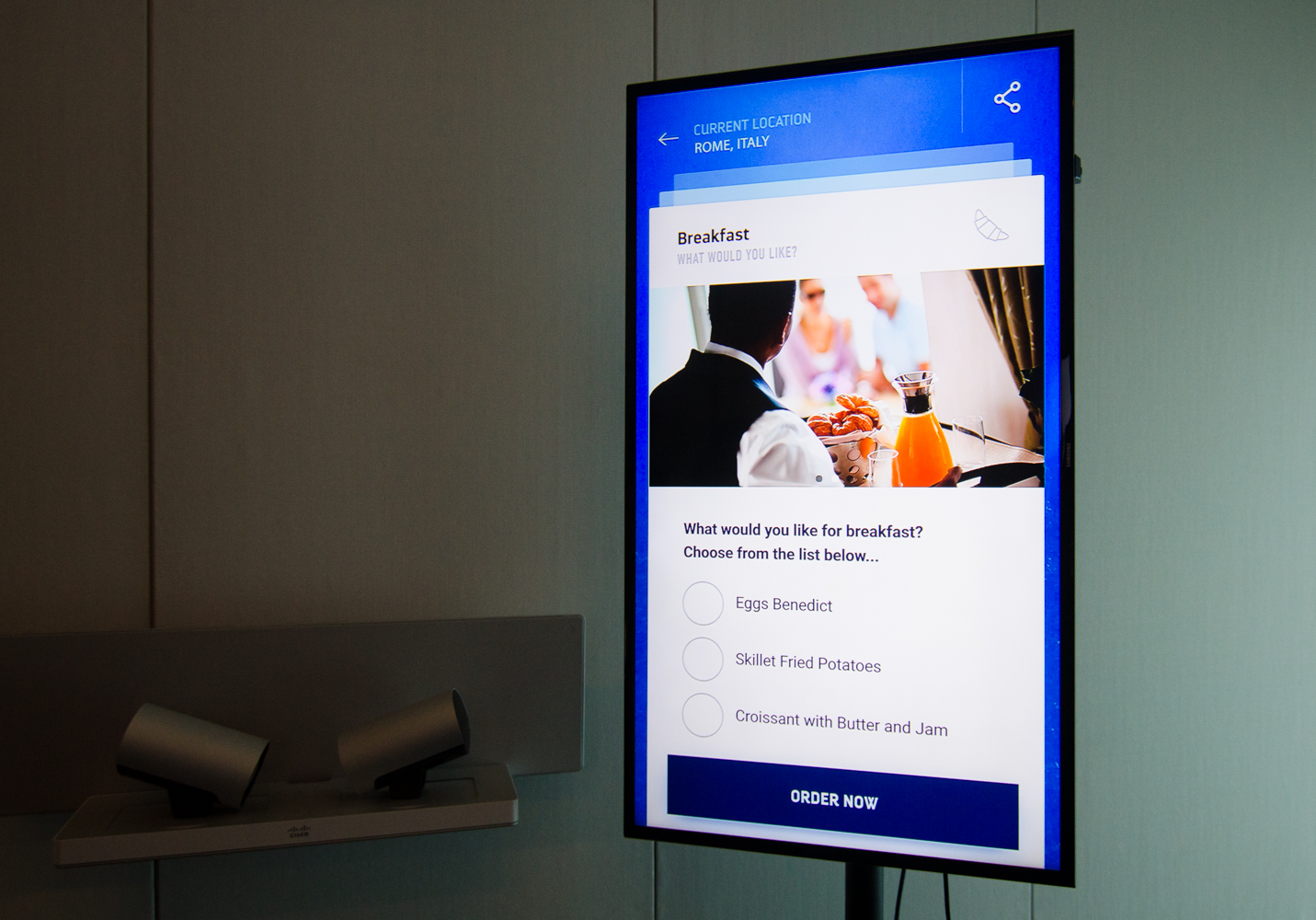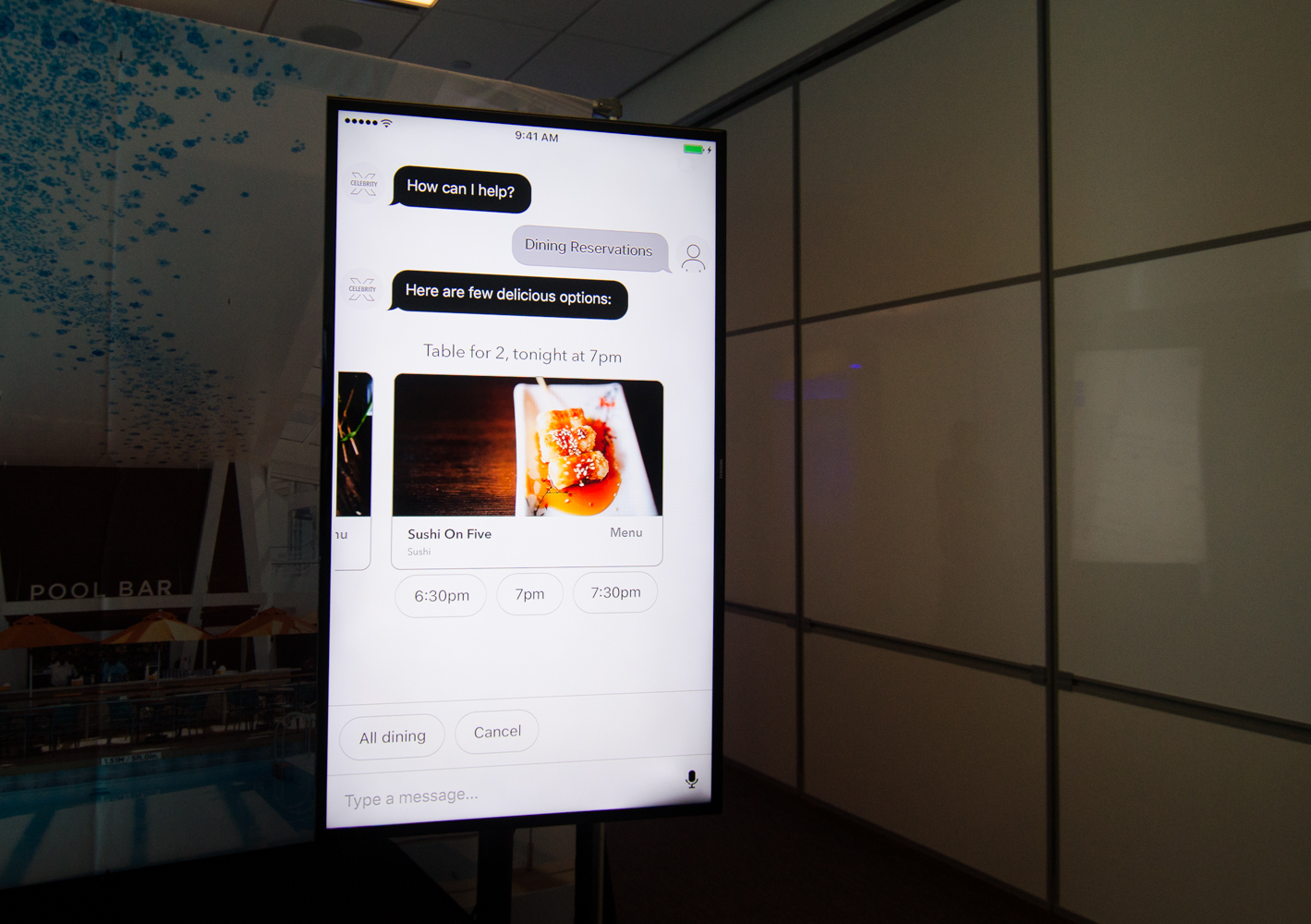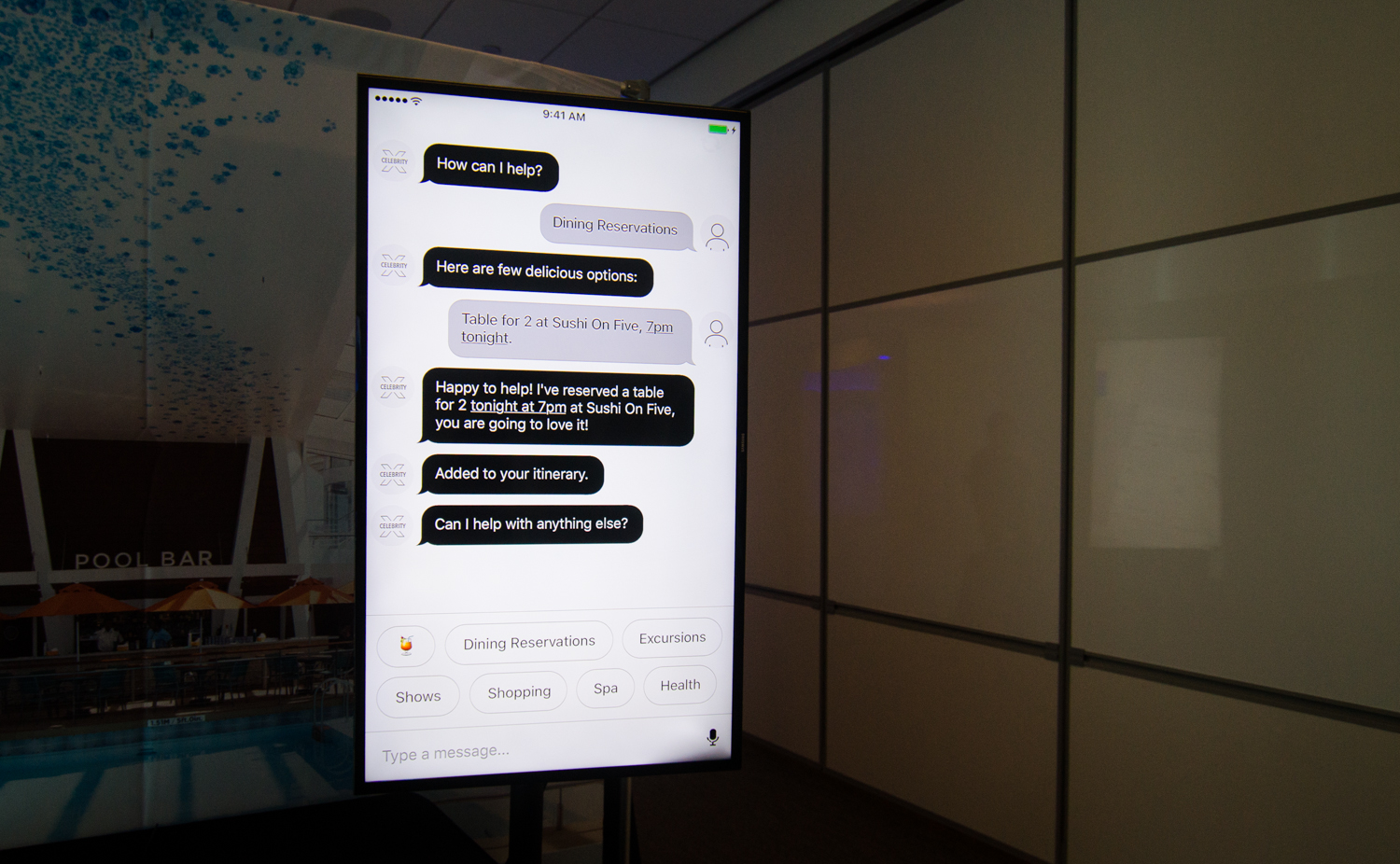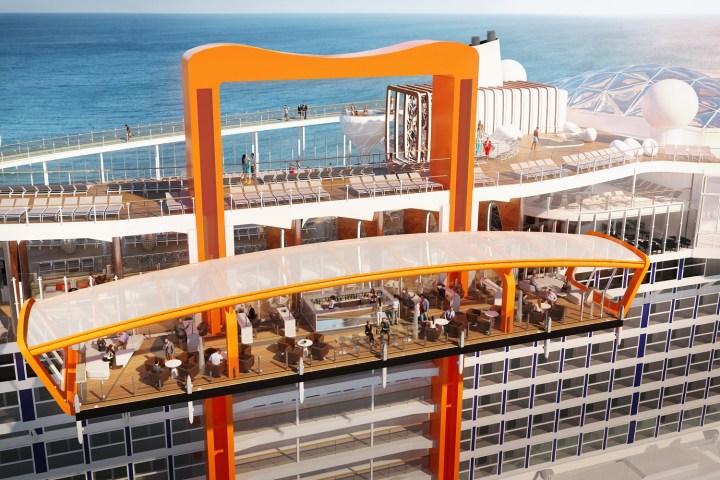
Celebrity unveiled plans for its next ship, Celebrity Edge, which also serves as a showcase for Celebrity’s take on connectivity. Aside from a modern design that puts guests closer to the edge of the ocean, a lot of the new experiences rely on the incorporation of smartphones and home automation.
Part of the Royal Caribbean family of cruise companies, the majority of Celebrity’s target demographic own smartphones, according to Tim Klauda, vice president of Product at Celebrity. The company is utilizing that factor in helping guests find their way, order drinks and food, control their cabin, and more. These experiences may also extend to Celebrity’s other cruises as the new concept does not necessarily require any new hardware installments on the ship itself.
Virtual Concierge
Celebrity showed a proof-of-concept mobile app that lets guests control the cruise experience, even before setting sail. For example, guests can pre-book reservations at restaurants aboard the cruise, see key details such as the ports of call, the itinerary for each day, and more.
Also, with the app, guests can add additional excursions to the itinerary, find tons of relevant information like passenger reviews for restaurants, and even receive navigation assistance for moving around the ship (think of Google Maps driving navigation). When on the cruise itself, the app begins suggesting places guests can go and things to do.
The app has a chat bot called the Virtual Concierge, and it can help make dinner reservations, recommend bars and events, order drinks, and more. It keeps track of behavior the more it’s used, so if it recognizes a guest ordered a vodka martini before, it may recommend the drink again. It can also see if a guest is traveling with a companion, so if a drink request is made, the concierge automatically asks if the travel partner would like a drink as well.
And, the more you explore and experience what the cruise has to offer, the more points you can get to earn badges.
“Badging is fun … it’s also a way for us to get guests to explore parts of the ship they might not have known about, and to reveal new entities to them and different places they might want to play around in,” Klauda said.
Wayfinding
The ship’s crew needs to be able to track passengers to deliver food and drinks, but passengers also need to be able to navigate the ship precisely. It’s tough to rely on GPS in the middle of the ocean, and that’s why the company plans to employ existing Wi-Fi access points on the ship to locate passengers with the help of sensors on their smartphone.
The company said it has gotten the accuracy down to six inches, but it’s still working on making sure the location tracking technology compensates for a cruises’ rocking motion as well.
Faster check-in
The check-in process at the port can be painful, so Celebrity is looking to facial recognition and its companion mobile app to make the start of the journey seamless. Guests would fill out and validate a lot of information via the app before the journey, and at the port a security terminal will be equipped with a camera with the ability to detect passengers’ faces and pull up their information.
“This could be a part of your security check so you don’t have an extra stop, instead of going to the counter and getting all that [paperwork],” Klauda said.
Cabin automation
Cabins will come with touchscreen panels that allow guests to control every aspect of their room, such as turning lights on and off. Preset options can automatically help set the mood at any time of day — guests can configure their room to turn on the lights as the alarm rings at 8 a.m. or turn off the lights before bedtime.
This also helps the company be a little more energy efficient, as lights will turn off automatically if the room recognizes it’s empty.

Rooms can also identify when a guest’s smartphone nears the door, which will then unlock automatically. RFID cards are still available to unlock doors in case guests don’t own a
X-ray and the Innovation Lab
One feature Celebrity is experimenting with is the ability for passengers to see through certain parts of the ship with their smartphone – places that aren’t normally accessible. Rather than interrupting the workflow of crew at critical locations like the bridge, for example, passengers will be able to see the action themselves by pulling up their
This augmented reality-based technology likely works via a camera on the other side of the wall projecting what’s inside to the smartphone, although Celebrity hasn’t disclosed how it’s actually done.
This, and all of the aforementioned features, were demoed at Celebrity Cruises’ Innovation Lab — a structure that will continue to operate as a facility for testing and demoing purposes. Inside the facility is what the company calls the “largest virtual reality cave in the world.”

It’s essentially a small room with screens encompassing — top, bottom, left, right, and front. All the screens display a life-size 3D structure of the ship that you can move around in, but you need to don 3D glasses to see everything clearly. The company said it will continue to use this tool to demo places on the ship until construction is complete.
For many people, smartphones may remind them of work — which is why the company is stressing that it’s working to offer aSteve similar experience for people who don’t want to carry their smartphone around.
“We’re not taking away services from people, we’re trying to figure out how to advance your vacation if you do want to engage with your smartphone,” said Jay Schneider, senior vice president of Digital at Royal Caribbean Cruises. “You’re not required by any means to use your
Celebrity said what was demoed is only a small snapshot of what the company is working on, and there are a number of other announcements to come later this year regarding the ship.
The Celebrity Edge is expected to set sail for the first time in December 2018, but you can already book rooms now.
